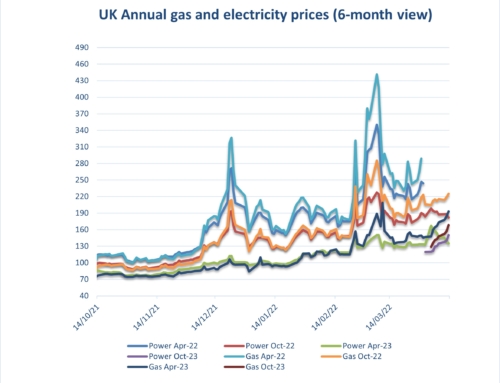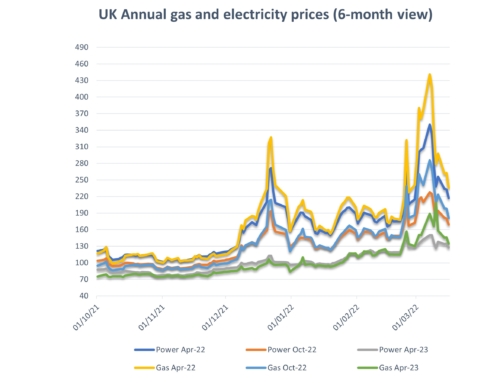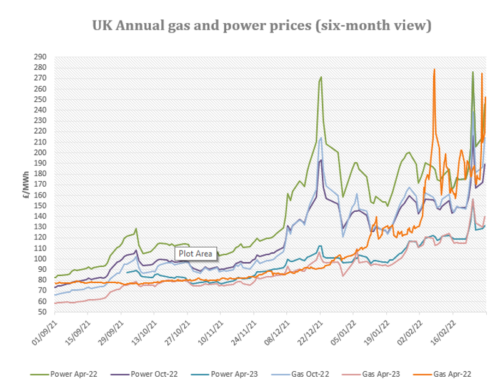Energy costs: News of the successful development of 3 Covid vaccines have buoyed global oil and coal markets with UK gas and electricity following suit. This was supported by lower than expected wind output, continuing OPEC production cuts and more LNG deliveries diverted towards Asia. However, markets have fallen back again in the last couple of days on expectations of a mild European winter and healthy supply outlook with gas storage at 91%, increasing Russian Nordstream flows and EDF’s French nuclear output ramping up successfully following recent prolonged outages. Concerns remain over UK LNG delivery expectations following the prediction of potential severe La Nina weather conditions across Asia and the Pacific this winter, which may drive increased gas demand and prices in the region.
Upside:
Supply Outages – Dungeness nuclear power plant is to remain closed until February 2021 due to extended maintenance.
LNG – Although the USA has again started sending out LNG shipments with several expected to dock in the UK during November, higher Asian prices remain a threat to their arrival.
Downside:
Gas storage – European gas storage remains stable at 91% fullness.
Weather – Winter weather is currently forecasted to be above seasonal norms in Europe. Although la Nina conditions expected in Asia/Pacific.
Oil markets – Oil markets bounced back following the announcement of the successful development of 3 Covid vaccines and OPEC have delayed discussing the end of production cuts until December.
Lockdown 2 – This continues to dampen demand but to a lesser extent than Lockdown 1.
French nuclear – Production has successfully been ramped up across EDF’s facilities making significant winter exports to Europe unlikely.
Could go either way:
Sterling – Brexit negotiations are ongoing and predictions of a no-deal. Any problems in this area will feed through to exchange rates and impact energy prices and also are impacting carbon costs.
Carbon Costs – Uncertainty remains over the outcome of Brexit talks and how the UK’s Emissions Trading Scheme will be structured.
Non-energy costs:
On the electricity side organisations will see further increases in pass through costs from both government and industry infrastructure providers in the coming months as the Targeted Charging Review (TCR) is added to the other distribution, transmission, Electricity Market Reform (EMR), Capacity Market, Energy Intensive Industries (EII) charges already in place.
Climate change levy (CCL) again changed on April 1st. Your CCA related CCL exemption rates changed at the same time (Gas to 81%, Electricity to 92%). Please ensure your PP11 forms are updated and sent through.
Is your organisation covered by the new Streamlined Energy and Carbon Reporting (SECR) scheme?
Designed to replace in part the Carbon Reduction Commitment (CRC) which ends this year and to follow on from the energy savings recommendations generated by ESOS compliance. Note, SECR will cover a wider scope of organisations than CRC and ESOS do. Full details are attached below.
SECR will require all large enterprises to disclose within their annual financial filing obligations to Companies House, their greenhouse gas emissions, energy usage (from gas, electricity and transportation as a minimum), energy efficiency actions and progress against at least one intensity ratio.
The scheme came into effect on April 1st, 2019 and will be required to be included in the first set of accounts published for financial years starting after this date.
The scheme covers publicly quoted companies (extending their current disclosure requirements) and UK incorporated companies or LLPs with two or more of the following.
- More than 250 employees
- A turnover in excess of £36 million
- A balance sheet in excess of £18 million.
UK subsidiaries, who meet the eligibility criteria, but are covered by a parent group’s report (unless the parent group is registered outside the UK) and companies using less than 40,000 kWh of energy during the reporting year do not have to provide disclosure. Note the reporting year should be aligned to your financial year.
Are you eligible for an EII rebate?
Under current rules, if you qualify at an industry sector level and your business passes the 20% electricity intensity test you may qualify for exemption to CFD and RO charges. Please see the attached Government RO/CFD guidance document and update and give Abby a call on the main number to discuss this further.
A copy of our detailed market report is available: Eneco Market Information mid November 2020
Gas and electricity prices from 2009 to date are available here: Eneco Gas and Electricity Pricing Trends mid Nov 2020
A copy of our environmental charges and Climate Change Levy rates from 2012 to date: Environmental Pass Through Charges and CCL ppkWh Updated 21.07.20
A copy of RO/CFD guidance document: RO_CFD_Guidance_Revised_July_2018
SECR: SECR EA Guidelines
TCR Charges (Targeted Charging Review): TCR Charges (Targeted Charging Review)




